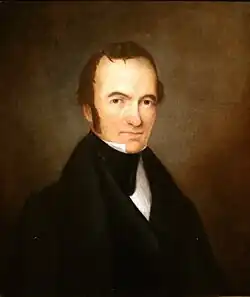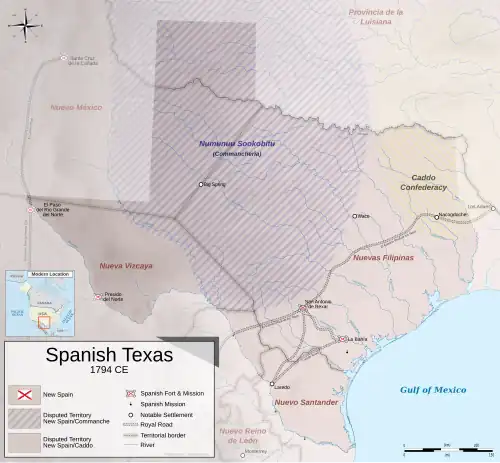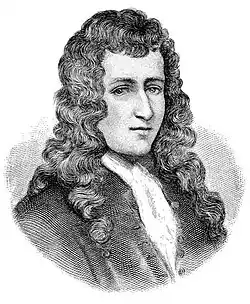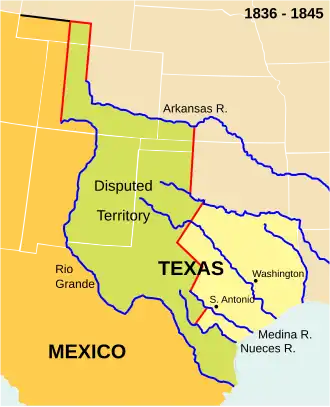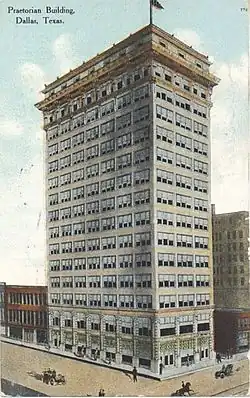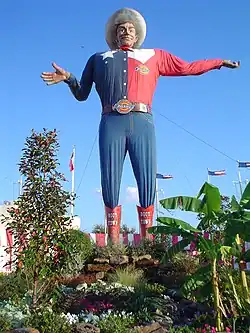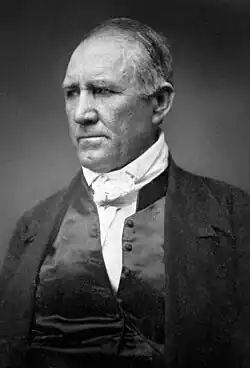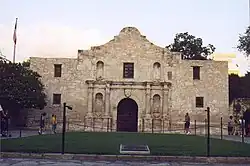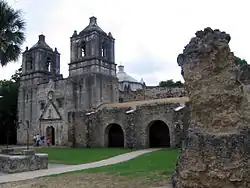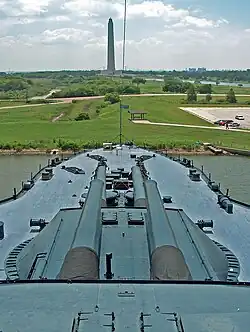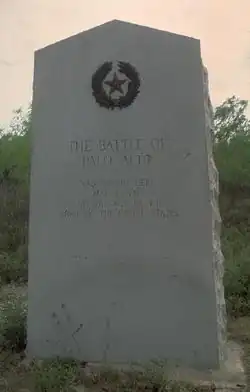Portal:Texas
The Texas Portal
Texas (/ˈtɛksəs/ ⓘ TEK-səss, locally also /ˈtɛksɪz/ TEK-siz; Spanish: Texas or Tejas) is the most populous state in the South Central region of the United States. It borders Louisiana to the east, Arkansas to the northeast, Oklahoma to the north, New Mexico to the west, and an international border with the Mexican states of Chihuahua, Coahuila, Nuevo León, and Tamaulipas to the south and southwest. Texas has a coastline on the Gulf of Mexico to the southeast. Covering 268,596 square miles (695,660 km2) and with over 31 million residents as of 2024, it is the second-largest state by area and population. Texas is nicknamed the Lone Star State for its former status as an independent country, the Republic of Texas. Spain was the first European country to claim and control Texas. Following a short-lived colony controlled by France, Mexico controlled the land until 1836 when Texas won its independence, becoming the Republic of Texas. In 1845, Texas joined the United States of America as the 28th state. The state's annexation set off a chain of events that led to the Mexican–American War in 1846. Following victory by the United States, Texas remained a slave state until the American Civil War, when it declared its secession from the Union in early 1861 before officially joining the Confederate States on March 2. After the Civil War and the restoration of its representation in the federal government, Texas entered a long period of economic stagnation. Historically, five major industries shaped the economy of Texas prior to World War II: bison, cattle, cotton, oil, and timber. Before and after the Civil War, the cattle industry—which Texas came to dominate—was a major economic driver and created the traditional image of the Texas cowboy. In the later 19th century, cotton and lumber grew to be major industries as the cattle industry became less lucrative. Ultimately, the discovery of major petroleum deposits (Spindletop in particular) initiated an economic boom that became the driving force behind the economy for much of the 20th century. Texas developed a diversified economy and high tech industry during the mid-20th century. As of 2024, it has the second-highest number (52) of Fortune 500 companies headquartered in the United States. With a growing base of industry, the state leads in many industries, including tourism, agriculture, petrochemicals, energy, computers and electronics, aerospace, and biomedical sciences. Texas has led the U.S. in state export revenue since 2002 and has the second-highest gross state product. (Full article...) Selected article -The Free State of Galveston (sometimes referred to as the Republic of Galveston Island) was a satirical name given to the coastal city of Galveston in the U.S. state of Texas during the early-to-mid-20th century. Today, the term is sometimes used to describe the culture and history of that era. During the Roaring Twenties, Galveston Island emerged as a popular resort town, attracting celebrities from around the country. Gambling, illegal liquor, and other vice-oriented businesses were a major part of tourism. The "Free State" moniker embodied a belief held by many locals that Galveston was beyond what they perceived were repressive mores and laws of Texas and the United States. Two major figures of the era were the businessmen, power brokers and crime bosses Sam and Rosario Maceo, who ran the chief casinos and clubs on the island and were heavily involved in local politics and the tourism industry. The success of vice on the island, despite being illegal, was enabled by lax attitudes in society and in government, both on the island and in the county. In one of the more famous examples of this, a state committee, investigating gambling at the fabled Balinese Room, was told by the local sheriff that he had not raided the establishment because it was a "private club" and because he was not a "member". (Full article...) Selected biography -Lyndon Baines Johnson (/ˈlɪndən ˈbeɪnz/; August 27, 1908 – January 22, 1973), also known as LBJ, was the 36th president of the United States, serving from 1963 to 1969. He became president after the assassination of John F. Kennedy, under whom he had served as the 37th vice president from 1961 to 1963. A Southern Democrat, Johnson previously represented Texas in Congress for over 23 years, first as a U.S. representative from 1937 to 1949, and then as a U.S. senator from 1949 to 1961. Born in Stonewall, Texas, Johnson worked as a teacher and a congressional aide before winning election to the U.S. House of Representatives in 1937. In 1948, he was controversially declared the winner in the Democratic primary for the U.S. Senate election in Texas before winning the general election. He became Senate majority whip in 1951, Senate Democratic leader in 1953 and majority leader in 1954. Senator Kennedy bested Johnson and his other rivals for the 1960 Democratic presidential nomination before surprising many by offering to make Johnson his vice presidential running mate. The Kennedy–Johnson ticket won the general election. Vice President Johnson assumed the presidency in 1963, after President Kennedy was assassinated. The following year, Johnson was elected to the presidency in a landslide, winning the largest share of the popular vote for the Democratic Party in history, and the highest for any candidate since the advent of widespread popular elections in the 1820s. (Full article...) Texas news
Wikinews Texas portal
ListsTexas-related lists
State symbols
Texas topicsSelected imageCities -Marshall is a city in the U.S. state of Texas. It is the county seat of Harrison County and a cultural and educational center of the Ark-La-Tex region. At the 2020 U.S. census, its population was 23,392. The population of the Greater Marshall area, comprising all of Harrison County, was 65,631 in 2010 and 66,726 in 2018. Marshall and Harrison County were important political and production areas of the Confederate States of America during the American Civil War. This area of Texas was developed for cotton plantations. Planters brought slaves with them from other regions or bought them in the domestic slave trade. The county had the highest number of slaves in the state, and East Texas had a higher proportion of slaves than other regions of the state. The wealth of the county and city depended on slave labor and the cotton market. (Full article...) General imagesThe following are images from various Texas-related articles on Wikipedia.
CategoriesSelect [►] to view subcategories
Texas Texas-related lists Communications in Texas Culture of Texas Demographics of Texas Economy of Texas Education in Texas Environment of Texas Geography of Texas Government of Texas Health in Texas History of Texas Texas law Military in Texas Native American tribes in Texas People from Texas Politics of Texas Professional wrestling in Texas Science and technology in Texas Texas society Sports in Texas Transportation in Texas Works about Texas Images of Texas Texas stubs Related pagesRelated portals
Attractions
Federally protected areas
 Things you can do
Associated WikimediaThe following Wikimedia Foundation sister projects provide more on this subject:
SourcesMore portalsDiscover Wikipedia using portals
| |||||||||||||||||||||||||||||||||||||||||||||


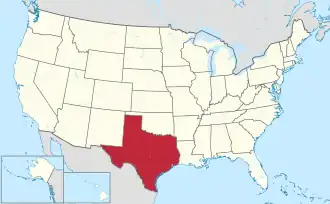
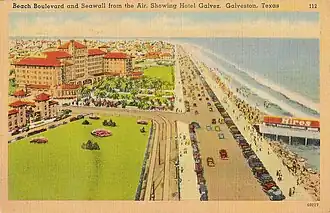
.jpg)


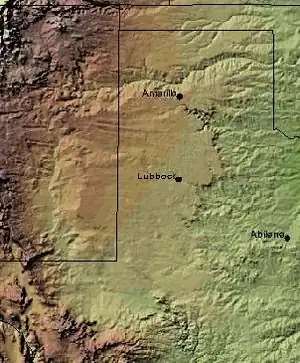

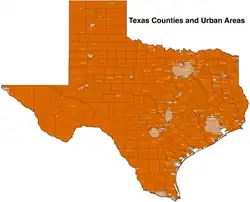

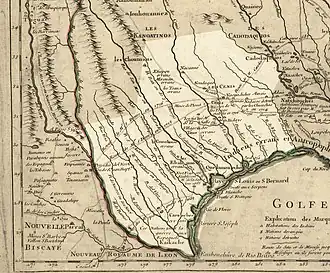
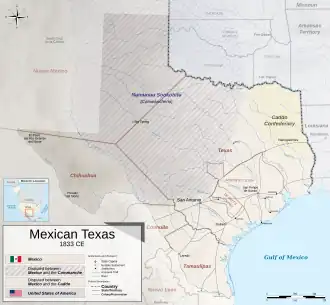
.png)
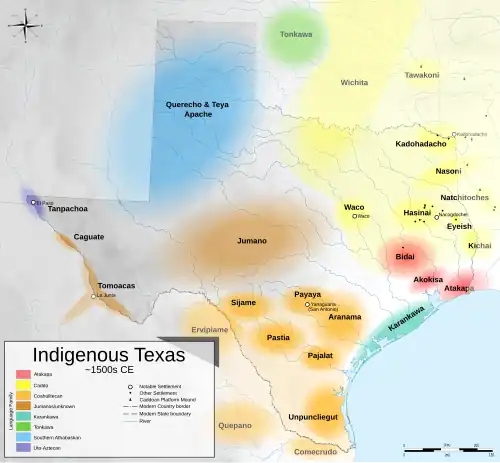
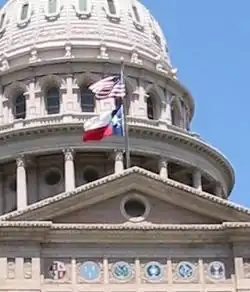
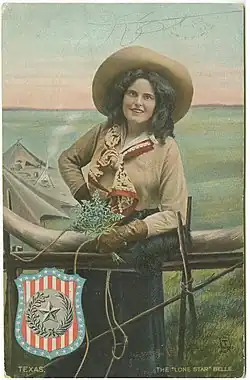
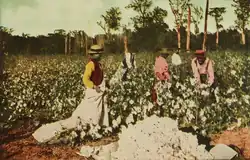
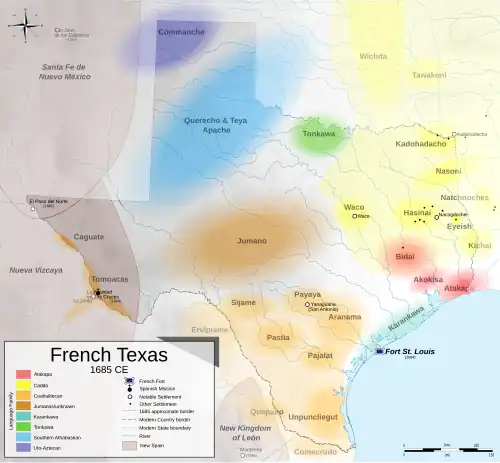

.jpg)
